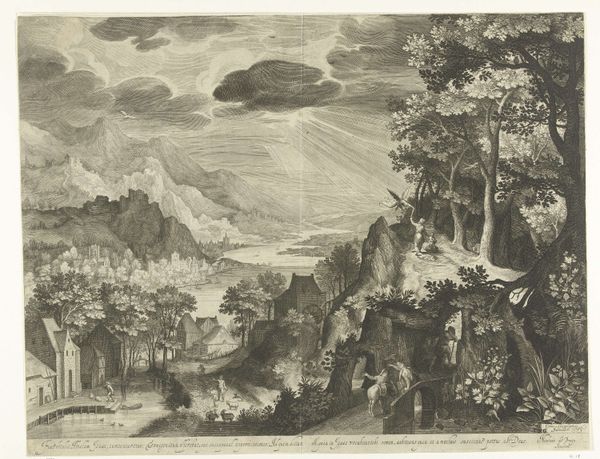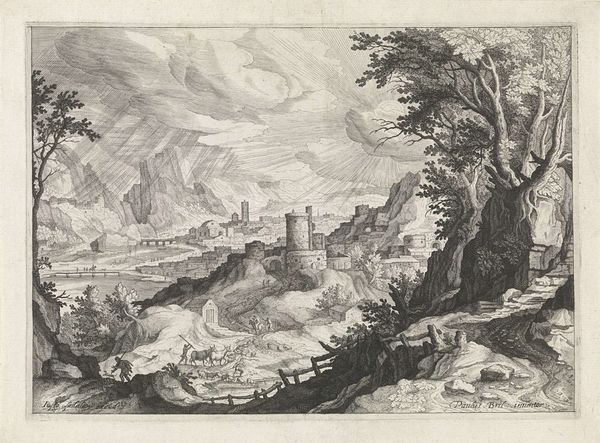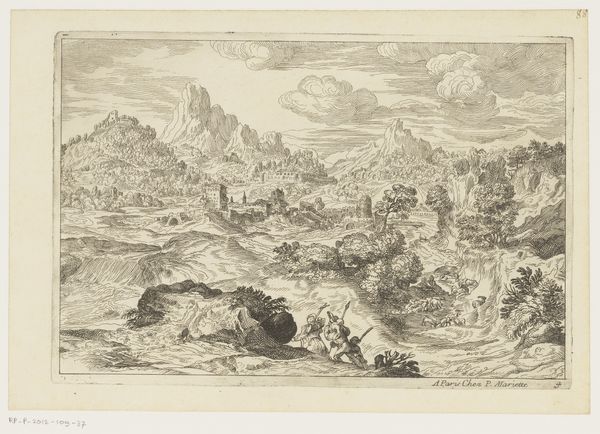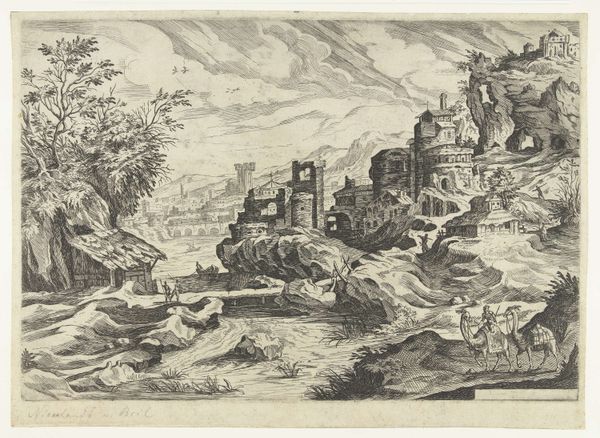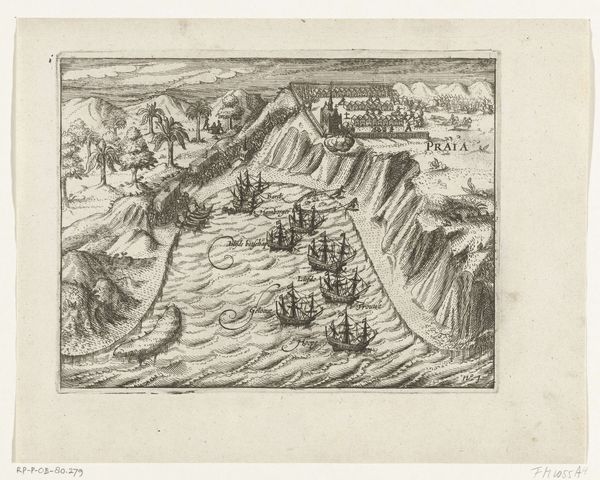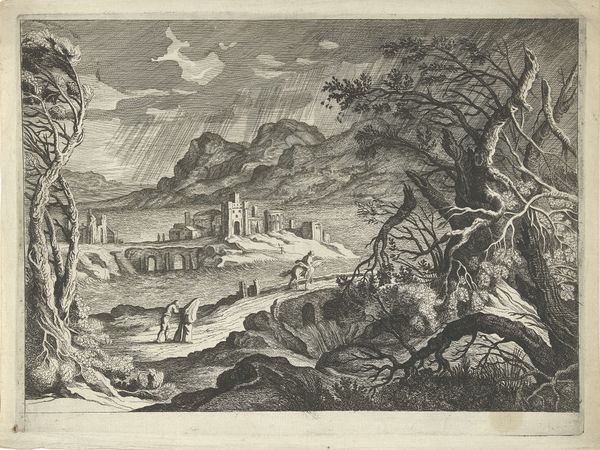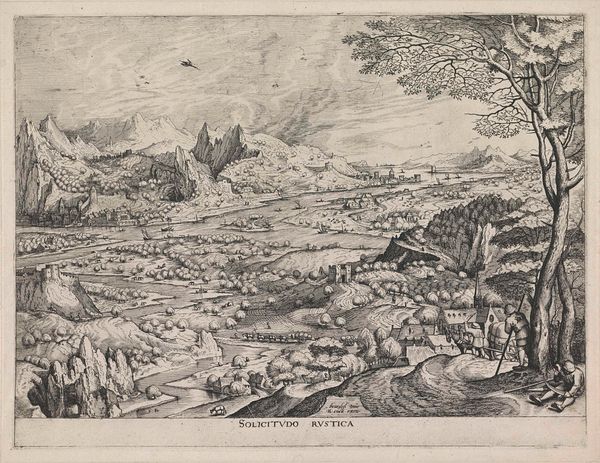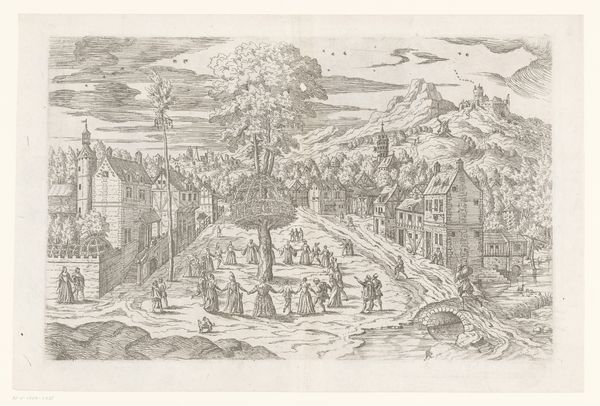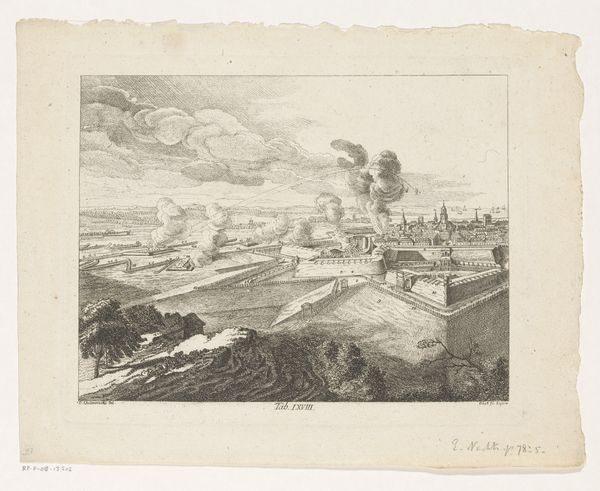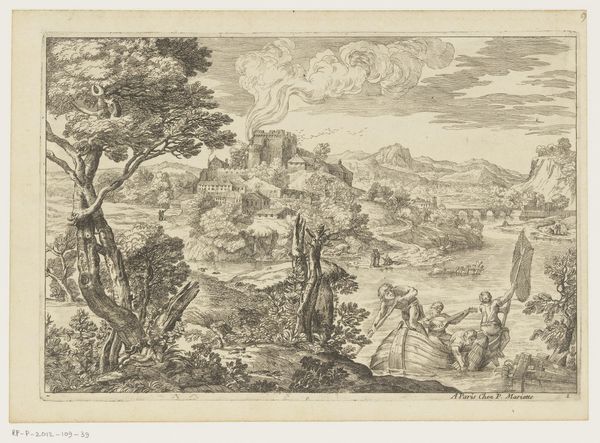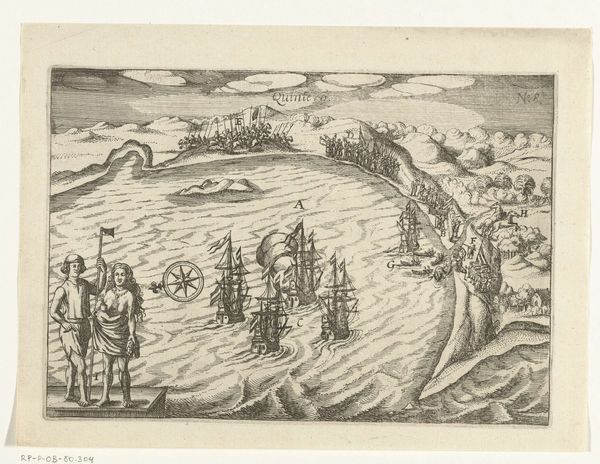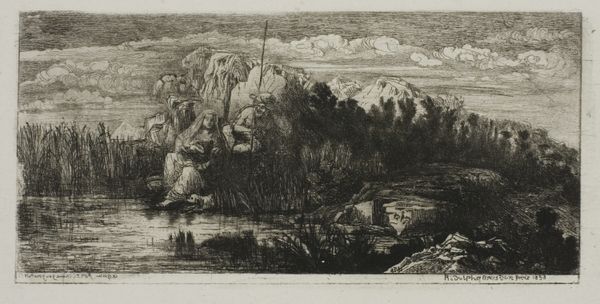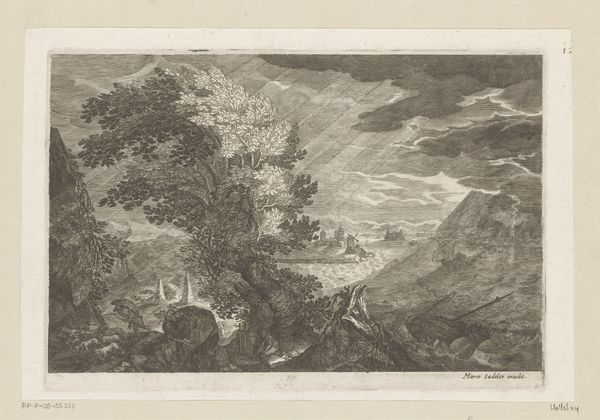
print, etching, engraving
#
narrative-art
# print
#
etching
#
landscape
#
history-painting
#
engraving
Dimensions: height 140 mm, width 194 mm
Copyright: Rijks Museum: Open Domain
Antonio Tempesta made this print, Landschap met de val van Icarus, using etching, sometime between 1575 and 1630. Etching is an indirect intaglio process, a printmaking technique that requires an acid-resistant ground, a metal plate, acid, and a printing press. To create this print, Tempesta applied a waxy ground to a copper plate, then drew the composition onto the ground with a stylus to reveal the bare metal. Next, he immersed the plate in acid, which bit into the exposed lines. The longer the plate sits in the acid, the deeper the lines. Once the image had been bitten to the appropriate depth, Tempesta removed the plate from the acid, washed it, and removed the ground. The plate was then inked and passed through a printing press, transferring the ink from the etched lines onto paper. The magic of the natural world and the potential it has is evident, but it's only through the skilled labor of the artist that the image could come to life. This print shows the relationship between humans and nature. The artist carefully used the etching process to capture the drama and detail of the fall of Icarus and the landscape. This speaks to the power of skilled craftsmanship and the ability to create images that express narratives.
Comments
No comments
Be the first to comment and join the conversation on the ultimate creative platform.
